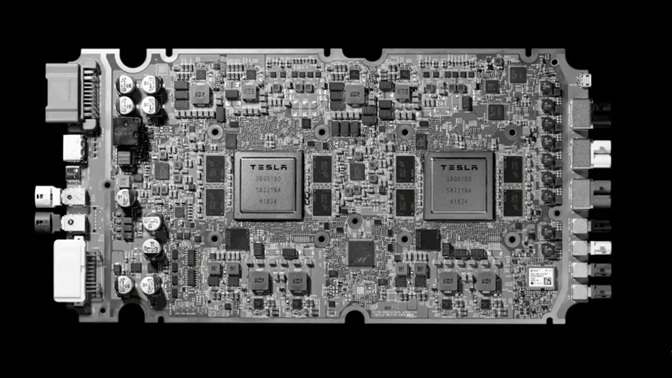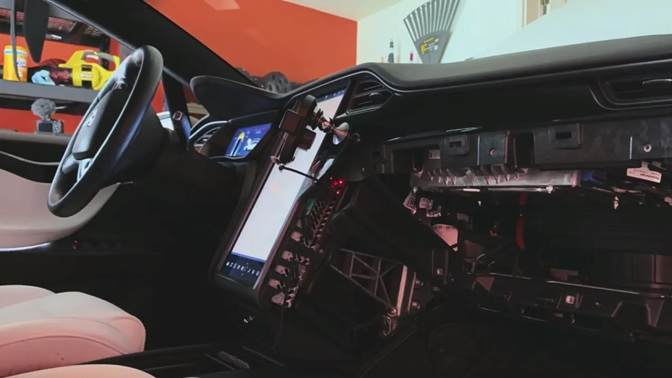Imagine buying a car with the promise that, one day, a simple software update will turn it into a fully autonomous robotaxi. That’s the vision Tesla painted in 2016—a future where every Tesla would be capable of unsupervised, self-driving with no need for human intervention.

Fast forward to 2025, and that dream has hit a hard reality. Tesla now admits that millions of its vehicles don’t have the hardware necessary to deliver on that promise. And the consequences? They could cost the company billions of dollars, possibly more than any auto recall in history.
Back in 2016, Tesla made a huge announcement: every vehicle it produced from that point on would come with “all the hardware necessary for full self-driving.” The term “Full Self-Driving” (FSD) was never meant to describe a feature immediately available. Instead, it was a promise that your car could eventually drive itself, just like a robotaxi, through a future software update.
CEO Elon Musk took it even further, saying that Teslas would eventually reach Level 4 or Level 5 autonomy—meaning they could drive anywhere, under any condition, without a human behind the wheel. The idea was revolutionary. And millions of customers bought in.
Hardware Limitations
But that confidence didn’t last. Early Teslas came with a system called HW2.5 (Hardware Version 2.5), which was soon deemed insufficient for full autonomy. So Tesla quickly upgraded its production lines to install HW3, a more powerful self-driving computer. For those who had already purchased the FSD package, Tesla offered free retrofits, swapping out the old computer for HW3.
By 2023-2024, Tesla began transitioning again—this time to HW4, an even more advanced system. But unlike the last transition, Tesla claimed HW3 would still be enough for Full Self-Driving. Musk insisted that Tesla was focusing on improving FSD for HW3 users first, and that performance on HW4 would actually lag behind. That turned out to be overly optimistic.
Musk Admits the Truth
In early 2025, Elon Musk finally acknowledged what many suspected: HW3 just isn’t powerful enough to deliver unsupervised self-driving. That’s a massive problem, because there are an estimated 4 million Teslas with HW3 hardware out on the roads today.
Musk stated that Tesla would need to upgrade the hardware in any vehicle where the owner paid for the Full Self-Driving package—something he admitted would be “painful” and “difficult.” And he’s not wrong.
Tesla hasn’t publicly revealed how many people paid for the FSD package globally. But by the end of 2022, there were 400,000 FSD beta users in North America alone. Even assuming a modest adoption rate outside the U.S., it’s reasonable to estimate that over 500,000 vehicles with HW3 hardware are owed a computer upgrade. And the cost? Easily over $500 million, not including the immense strain it will place on Tesla’s service infrastructure. And here’s the kicker: Musk himself admitted he’s “glad not that many people bought the FSD package.”

False Advertising? It’s More Than Just FSD Buyers
Tesla didn’t just promise FSD capability to those who paid for the software. The company marketed its cars—every single vehicle sold since 2016—as having all the necessary hardware for self-driving. Now that Tesla has walked back that claim, even owners who didn’t buy the FSD package may have a case. Their cars were sold with the expectation of being “future-proof,” and now that future seems out of reach.
In fact, a legal precedent was already set in 2022 when a judge ruled that Tesla had to upgrade a customer’s hardware so they could access the FSD subscription features. That opens the door for more lawsuits, especially after Musk’s recent admission.
With more than 4 million vehicles potentially impacted, Tesla has a few options—but none are easy.
- Retrofit HW3 Vehicles with HW4: As Musk suggested, Tesla could upgrade the computers of all FSD buyers. This would cost billions and demand massive service center resources.
- Offer Buybacks or Discounts: Tesla could soften the blow by offering generous trade-in values or discounts on new vehicles with HW4 for affected owners.
- Push Software Workarounds: Tesla might try to optimize FSD on HW3 as much as possible, even if it falls short of full autonomy.
- Wait for Legal Pressure: It’s likely that many owners will only receive upgrades or compensation if lawsuits force Tesla’s hand.
One thing seems clear: owners who didn’t buy the FSD package probably won’t get much help, at least based on Tesla’s current stance.
| Hardware Version | Production Timeframe | Estimated Vehicles Produced (Global) | Rollout & Overlap |
|---|---|---|---|
| HW3 (FSD Computer) | Apr 2019 – Late 2023 (phased out) | ~4 million (approx.) | Standard in all models from 2019–2022; remained in some cars through 2023. Overlap with HW4 during 2023. |
| HW4 (FSD Computer) | Jan 2023 – Present (ongoing) | ~2.5–3 million (approx.) | Introduced Jan 2023 (S/X first); became standard across all models by early 2024. Overlapped with HW3 in 2023. |
This isn’t just a technical issue—it’s a trust issue. Tesla promised something it couldn’t deliver, and now millions of customers feel let down. Some paid thousands of dollars for a feature that’s still in beta after nearly a decade. Others bought their Teslas believing they were investing in a car that would become more valuable over time. Musk even called Teslas “appreciating assets” thanks to their self-driving potential.
That has clearly not been the case. Many owners now feel like they were sold a dream, not a product—and that dream is becoming increasingly expensive.
Tesla is facing mounting pressure, both from its customer base and the legal system. Lawsuits are already stacking up, and more are expected now that Musk has publicly admitted HW3 doesn’t cut it. At the very least, Tesla needs a transparent plan to address the gap between what was promised and what’s now possible. Will Tesla actually retrofit all eligible vehicles? Will it offer compensation instead? Or will the courts have to step in? One thing’s for sure: this situation is far from over.
Tesla’s Full Self-Driving journey has been ambitious, inspiring, and at times, revolutionary. But it’s also been plagued by overpromises and underdelivery. Now, as the company faces one of the biggest hardware-related challenges in auto industry history, how it responds will define its future. If you’re a Tesla owner, you deserve transparency. If you bought FSD, you deserve what was promised—or fair compensation. And if you’ve been following Tesla’s evolution, this chapter is a powerful reminder that bold visions must eventually meet real-world accountability.
Related Post
